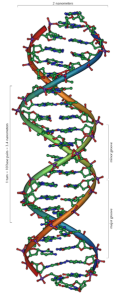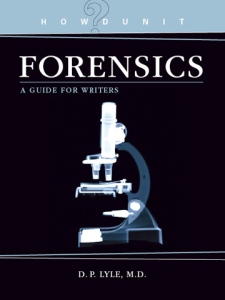My guest today in Handwriting Analysts Michelle Dresbold. She will offer her insights into the Casey Anthony case by examining Casey’s handwriting.
Casey Anthony
I am a handwriting detective. As I explain in my book, Sex, Lies and Handwriting, my specialties range from handwriting identification, (including anonymous letters and suspected forgeries), to threat analysis, to personality profiling. I have testified in a wide variety of cases including arson, embezzlement, voting fraud, forgery, stalking, and murder.
Lately, the media has been inundated with news about the Casey Anthony case. The Prosecutors theory is that Anthony suffocated her daughter, Caylee, so she could be free to “live the good life.” Their case presents evidence that suggests that Casey stuffed Caylee’s body in her car trunk and drove around for days before she dumped her daughter’s body in the woods near her parent’s home.
Casey Anthony had originally claimed that on Monday, June 9, 2008 she left her 3-year-old daughter, Caylee, with her nanny, Zenaida Gonzalez. However, when she returned to the nanny’s Florida apartment, Caylee was missing. Casey didn’t notify the police, she said, because she did not want to worry her parents and wanted to do her own investigation. Casey’s mother, Cindy Anthony, however, became worried and five weeks after Casey had allegedly “lost” her daughter, Cindy Anthony reported her granddaughter’s disappearance to the police.
After a five-month nationwide search, Caylee’s remains were found by a meter reader.
In his opening statement, defense attorney José Baez told jurors that Caylee had accidently drowned in the family’s swimming pool. He suggested that Casey Anthony’s bizarre attitude and lying was a result of her alleged sexual abuse by her father and her brother.
Recently, I reviewed documents released by prosecutors in the Casey Anthony murder case including jailhouse letters between Anthony and fellow inmates. I’ve heard numerous theories about what Casey may have done and why… but, as I learned a long time ago, people can say whatever they want… but handwriting never lies.
As a handwriting profiler, I’m interested in what her handwriting has to say.
What stands out the most to me in Casey Anthony’s handwriting is her “bubble gum” script. Bubble gum writers have letters are almost uniformly the same height. The middle zone (the lower case letters a, c, e, i, m, n, o, r, s, u, v, w, x and the part of the other letters between the upper loops and the lower loops) of her writing is exaggerated. When the middle zone is overly large, like Casey’s, the writer has a tendency to be childlike and self-centered. These writers like to be the center of attention. It is difficult for them to delay gratification. What they see is what they want…today…this minute…right now!
Also, her individual letters and words have practically no space in between them. This narrow spacing indicates that Casey will crowd others for attention and can take up the time and energy of those around hers. Cramped spacing is also an indicator that she sees things from a very narrow perspective as opposed to seeing the big picture.
The artistic side of the word “Cookie” shows that Casey has a creative side. However, the letters “oo” show where this creative side may be put to use. The letters “o” and “a” are the communication letters. Think of these letters as little mouths. When a writer’s a’s and o’s are open at the top, the writer likes to talk and will find it difficult to keep a secret. When they are completely closed at the top the writer can take a secret to the grave. Casey’s “o’s” in “Cookie” are quite interesting because even in the artistic version of her script she wrote the “o’s” with a slash through them? Slashes through a’s and o’s, known as “forked tongue strokes,” are signs of a liar.
Casey actually makes her “o’s” three different ways. One is the “o” with the forked tongue slash through it (as seen in the words “cookie” and “on”). The second is an extra loopy “o” (as seen in the second “o” in the word “cool”)– an indicator that she rationalizes her behavior. But the third way she makes her “o’s” may be the most telling of all. You know that the o’s and a’s that are tightly closed at the top mean that the writer is tight lipped and secretive. Casey not only closes her o at the top, she makes sure it is sealed tight by finishing it at the bottom. There is no way she could even leave a slight gap at the top. She is so secretive that she won’t even tell herself the truth.
Besides the slashes, extra loopy loops, and her overly closed o’s, Casey does something else that indicates that she is good at telling whoopers. Her writing looks readable; however, if you take words out of context many are ambiguous or unreadable. Look at the word between “So I” and “have this Super cool pen” in the first line underneath the word “cookie”. Can you read it? See if you can read the words labeled “A”, “B”, “C” or “D”. In context, I’m sure you could easily make them out. But, out of context, what are they? People who are expert at tricky writing are like magicians. They make you see what they want you to see. They leave the interpretation of events vague and unclear, so that they have an out when they need it.
Casey Anthony also uses ambiguous letters in her signature. Her first name is spelled “CASEY.” So, given the fact that Casey knows how to spell her own name, why does it look like “CAESY”? That, my friends, is ambiguous or “tricky” writing.
Look closer at the signature and you will notice that the “a” in Casey’s first name is blown out of proportion. When a lowercase “a” is extra large it indicates that the writer is very concerned about his or her physical appearance. And, if you look carefully, you will see that there is a sharp point inside of Casey’s “a.” That point is called a “stinger.” Writers with stingers tend to be extreme in their sexual lifestyles – they either abstain from sex entirely, or they become sexaholics.
Also, do you see that Casey made her last name into a great big “X”? When a writer’s signature or personal pronoun “I” turns into an “X,” it shows that the writer feels as if his or her life has been ruined. These sad “x’ed-out” people worry and fantasize about death. Sometimes these gloomy thoughts are about other people’s deaths and sometimes these morbid feelings about the writer’s own demise.
Many people have asked if her writing shows that she has been abused. It’s hard to say for sure if a person has been abused however, she does have a number of signs that suggest that she has major trust issues; including, but not limited to, the letter “c” in the word, “cool”. The letter “c” is the trust letter. The more the letter “c” is closed the more the writer is “closed off” and less she can trust. Notice that Casey’s “c” is almost completely closed. Her narrow, compressed spacing also stems from insecurity and fear. And, of course, the extreme secretiveness that we saw in the letter o shows, that like many people of abuse, they feel it is imperative to never let their “secret” out.
If you’d like to learn more about what you can tell from deciphering handwriting or to read my communication analysis of Casey Anthony’s statement to the police, please check out my website: michelledresbold.com.
Michelle Dresbold has been called the Sherlock Holmes of handwriting. For the past 15 years, she has been helping law enforcement agencies around the country put away the “bad guys.” A graduate of the United States Secret Service’s Advanced Document Examination training program, Michelle consults to private attorneys, police departments, and prosecutors throughout the United States. She is considered one of the top experts in the nation on handwriting identification, (including anonymous letters and suspected forgeries), personality profiling, and threat analysis. She has testified in a wide variety of cases including arson, embezzlement, voting fraud, forgery, stalking, and murder.
She is the author of Sex, Lies, and Handwriting, published by Simon and Schuster’s Free Press, and writes a weekly syndicated column, The Handwriting Doctor, which appears in newspapers throughout the United States. Michelle is also an accomplished artist, who has shown her work in galleries and museums across the country. Michelle has been featured on the CBS Early Show, the Today Show, the Fox Morning Show with Mike and Juliette, the O’Reilly Factor, Fox News, The History Channel and The ID Channel. Her press includes: Pittsburgh Magazine (cover story), Pittsburgh Tribune-Review, the Pittsburgh Post-Gazette, Philadelphia Magazine, The Washington Post, MarieClaire Magazine, Martha Stewart’s Blueprint Magazine, Woman’s World Magazine, Psychology Today and The Ladies Home Journal. Michelle graduated with high honors from the University of Michigan, with a degree in fine arts and psychology.







































